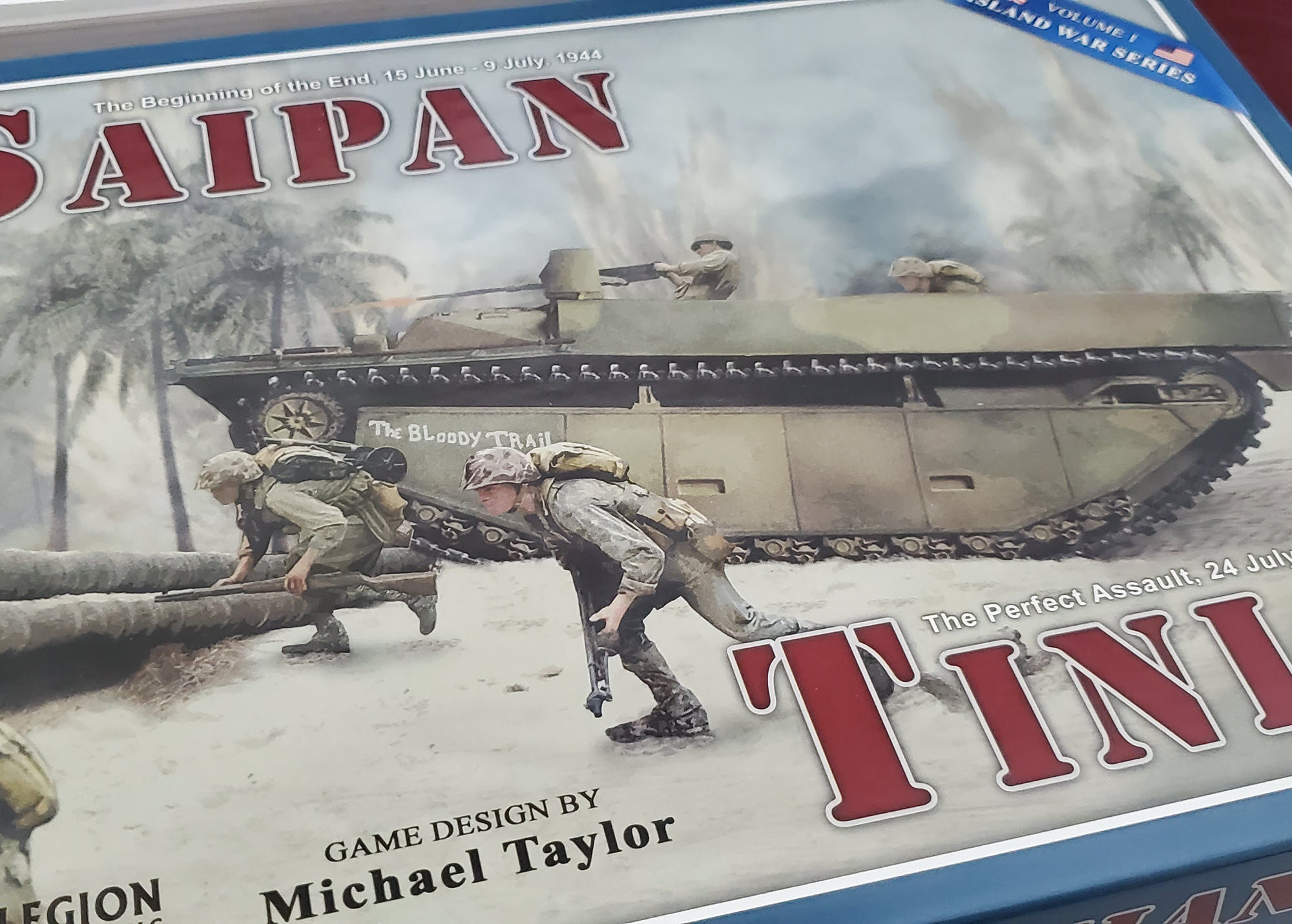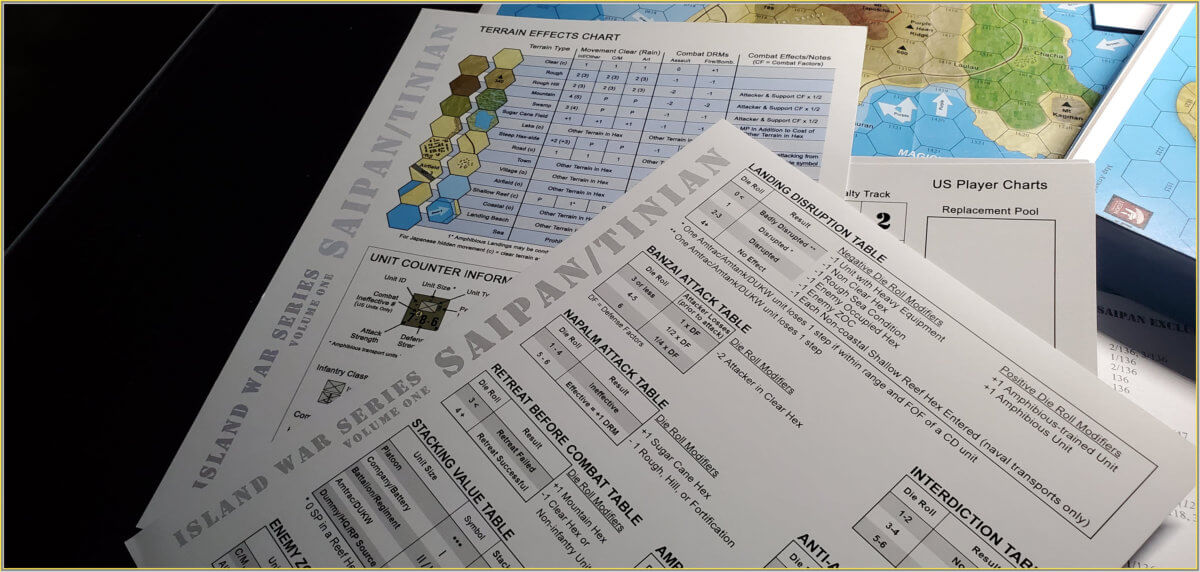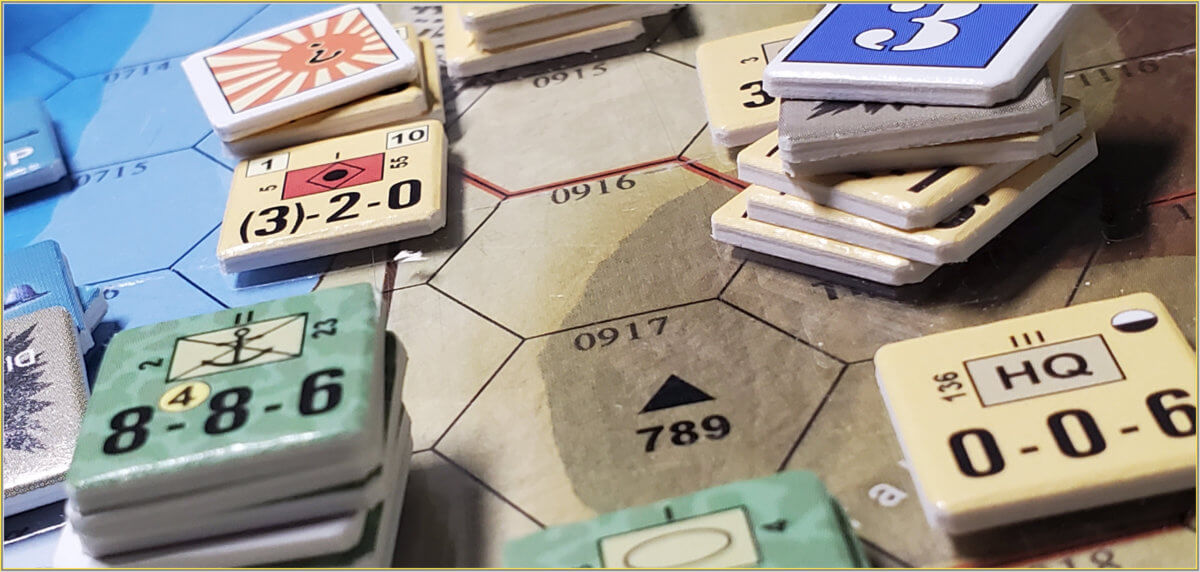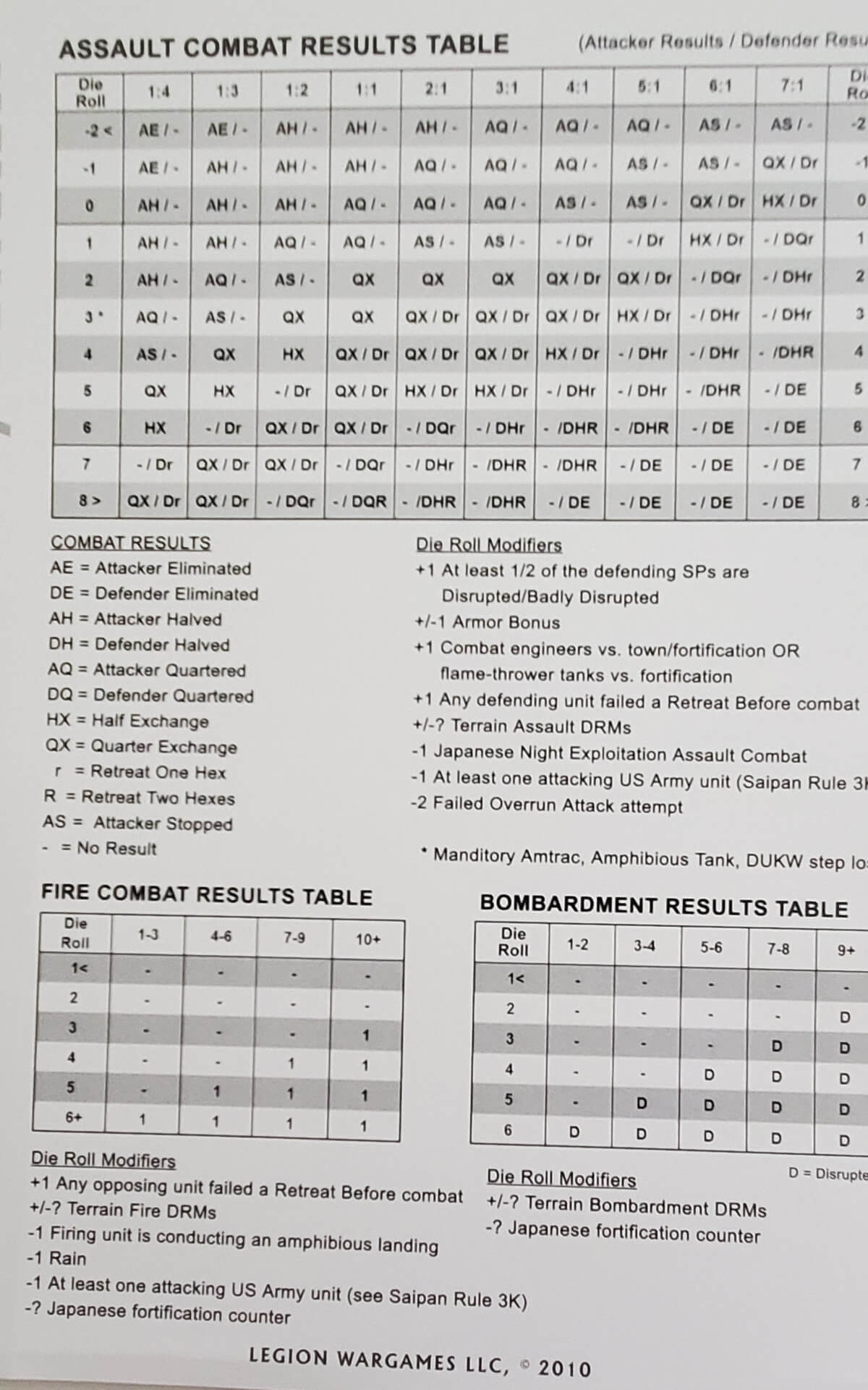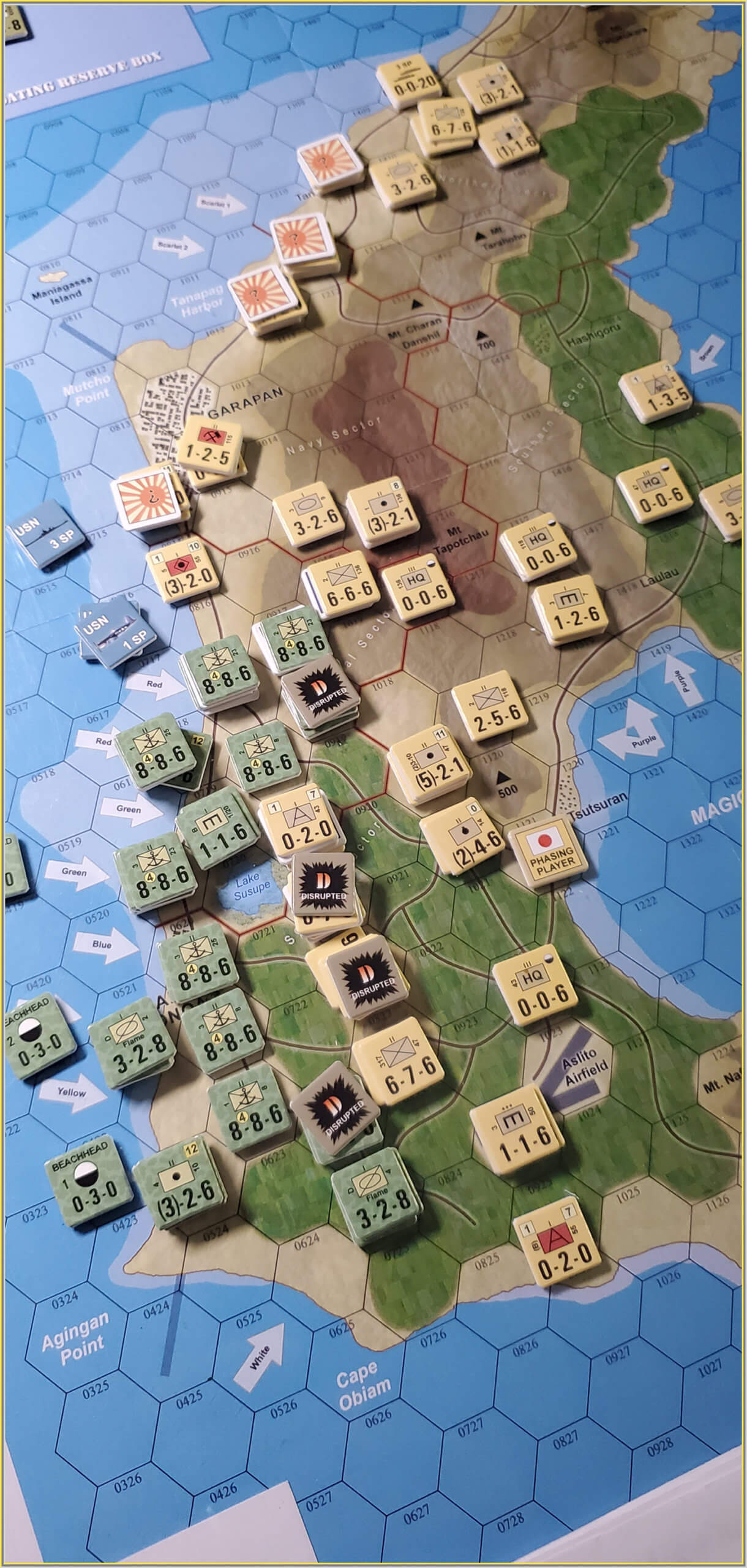Capturing the intent and meaning of warfare in the Pacific Islands post Guadalcanal is tough. I’ve yet to play a system that provides a good accounting in a playable format.
I have had some luck with battles over 1-2 day time scale at platoon level [TCS system], and of course historically referenced but not accurate squad level actions.
In some ways I think the biggest impediment is time to geographic scale.
Island War Series from Legion Games is no exception. with 1/2 mile hexes and 12 hour turns units at Battalion scale are conducting ‘direct fire’ or adjacent fire actions. Which just feels odd and possibly out of whack much like Europas war scale is odd.
Japanese units are really rewarded with being passive. Hunker down and stay in the fortifications. In this system. The IJA suffers post invasion in that they can no longer build or deploy fortifications. All fortifications are deployed in coastal hexes. Yet on Saipan we know that the IJA/IJN had extensive defenses.
A curious omission.
The game places you in charge of the defence and invasion for either side. Units are Battalion and company scale [ mostly Bn ].
All units are supposed to placed face down for some level of ‘surprise’. The fact remains that a solid player will 1. Bombard before assault 2. have an adjacent unit Fire first. 3. Assault anyway as with 2-3 hexes of 8 factor attackers you are going to get 2:1 or better odds + bonus’s DRMs to negate the terrain and possible higher valued units, none of which are greater than 7 in defense.
A stand alone unit at best can offer up 7. Two Marine Bns with no support acquire 2:1 off the bat, and more with Air support or multiple barrages to Badly Disrupt [ two disruptions from Barrage]. IF a BD was acquired you automatically have a 4:1. A 4:! is an ok attack to run as you have lotsa replacements and a some buffer in the VP’s for losses. A 4:1 in no terrain will guarantee you retreat [ 1 or 2 hexes], and possibly the halving of the Defender. Your Marines will have a 33% chance of taking 1/4 losses or 16% chance of 1/2 losses. Bumping odds to 5:1 reduces the chances of losses for the US down to just 2 in 6.
Now where the US can get tied up is a series of bad rolls. VP’s are tied to step losses that are counted for every US unit. Losses accumulate to the value of the defense factor. Once you reach it you are dead. This makes for a highly attrition based battle which while accurate gets grindy quickly. The US has to keep an honest eye on losses but can generally afford a gunho approach for the first dozen turns. You can lose 149 steps and still ensure a major US victory by clearing the map. In the first 3 turns the US lost 5 steps, in exchange for 15 IJA losses.
The sequence of play offers the non phasing player disruption recovery prior to the active player starting. This means the process of bombards and disrupting needs to possibly be done again to keep your enemies head down. Then you bombard hexes, then combat which can be fire based [‘ranged fire’] or assault or overrun. I dont see overun being used much as the required odds would be hard to achieve except against the weakest BD’d units. given all are face down, why take a risk. So lots of assaulting. Which opens up the one ‘flavour’ feature for the Defender – banzai attacks. These permit the Japanese to double their combat value before combat, but only after taking losses equal to between 1x the Defence Factors or 1/4. subject to a 1d6 roll. Then you compute odds and roll. Not an exciting prospect with a 50% chance of losing 1X the defenders value.
Logistics are simple and abstracted for both sides. Proper defence of the beachheads will be required, but no IJ force should ever get near that lucky.
I’m not finished here and will probably switch over to the Tinian scenario as I dont see me running 50 turns of this. Its not a game that is going to generate a lot of ‘gee what if I try this’ optional game play. Yanks bulldog in. Japanese hunker down. and you roll ‘dem dices!! :).
The map art is a bit bland. But clear to readable. Units solid. Counters punch well. Quiet a few charts to fiddle with and keep track of items.
Once I get Tinian setup on the spare table, perhaps more play will reveal additional value I’m not currently seeing. It may just be that this theatre is too difficult to portray in a way that provides an engaging exciting experience. Reading Hornfischer and Tolls books on the Marianas had my juices flowing to explore more of the command and tactical challenges faced by the opposing sides. this may well be best served at the operational level.
Have you played?
What did you like if you did?
What am I missing?
